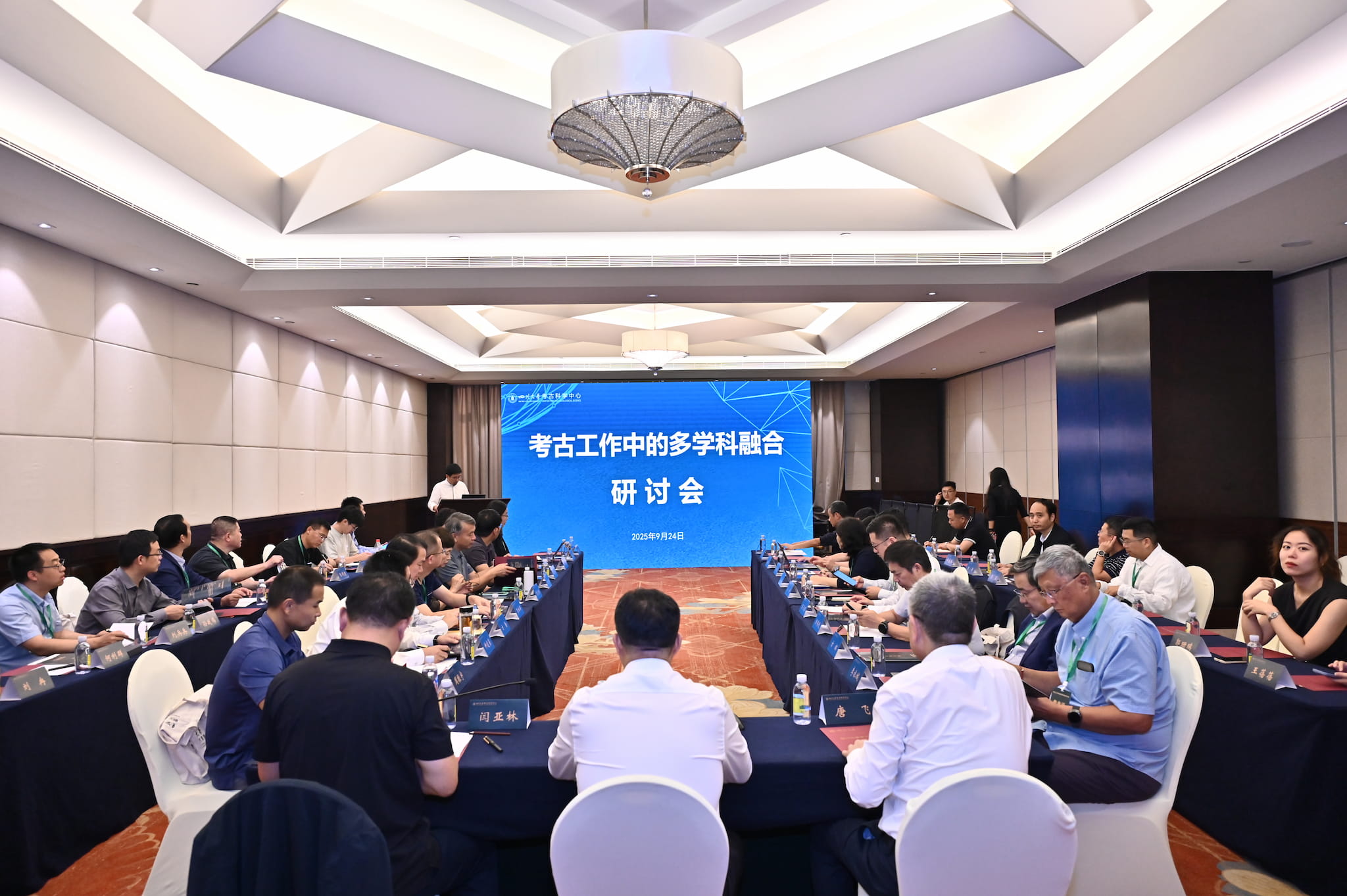Center for Archaeological Sciences, Sichuan University, Hosts "Symposium on Multidisciplinary Integration in Archaeological Work," Exploring New Research Paradigms

On September 24, the "Symposium on Multidisciplinary Integration in Archaeological Work," organized by the Center for Archaeological Sciences, Sichuan University, was successfully held in Chengdu. This meeting was one of the important side events of the National Archaeological Work Conference held in Chengdu on September 25. Yan Yalin, Director-General of the Department of Archaeology at the National Cultural Heritage Administration; Tang Fei, Director-General of the Sichuan Provincial Cultural Heritage Administration; and Liu Xiaohu, Deputy Secretary of the Party Committee of Sichuan University, attended the opening ceremony. Over 50 participants, including heads of archaeology departments and laboratory experts from universities such as Peking University, Jilin University, Northwest University, Shandong University, and Fudan University, as well as representatives from archaeological research institutes across multiple provinces and regions, engaged in in-depth discussions on the pathways for promoting innovative development in archaeology through multidisciplinary integration.
Liu Xiaohu, Deputy Secretary of the Party Committee of Sichuan University, delivered a welcome speech on behalf of the university. He pointed out that archaeological work bears the important mission of revealing the origins of civilization and inheriting cultural genes, and that deep multidisciplinary integration has become the core driving force for the high-quality development of archaeology.
During the thematic discussion session, attending experts shared a series of cutting-edge research findings. Professor Lü Hongliang from the Center for Archaeological Sciences, Sichuan University, systematically introduced the innovative mechanisms and initial achievements of multidisciplinary cross-integration in archaeology carried out under the framework of "organized research" at the center. Professor Zhang Dongju from Lanzhou University vividly demonstrated how to extract multi-layered information from limited excavation areas through scientific and technological methods, using the Baishiya Karst Cave site in Gansu as an example. Researcher Liu Jianguo from the Institute of Archaeology, Chinese Academy of Social Sciences, focused on explaining the significant role of surveying and mapping technologies such as remote sensing and LiDAR drones in expanding archaeological perspectives and reconstructing the trajectory of regional civilizational development. Researcher Ning Chao from Peking University interpreted ancient social structures, particularly the genetic evidence of matrilineal societies, from the perspective of ancient DNA analysis. Professor Deng Zhenhua, a Tenured Associate Professor at Peking University, further elaborated on the specific practices and effectiveness of multidisciplinary integration in major research topics, using the study of the origin and dispersal of Austronesian-speaking peoples as an example.
In the free discussion session, the experts engaged in lively exchanges on the application scenarios, current challenges, and future directions of multidisciplinary integration in archaeology. There was a consensus that multidisciplinary integration is not only an innovation in research methods but also a key force for expanding the dimensions of historical understanding and promoting a paradigm shift in archaeology. They also highly praised the exploratory efforts of the Center for Archaeological Sciences, Sichuan University, in institutional innovation. Li Shuicheng, a Liberal Arts Chair Professor at Sichuan University, provided an insightful summary of the discipline's trend from multidisciplinary to interdisciplinary, from the perspective of the three scientific revolutions in archaeology.
In his concluding remarks, Yan Yalin, Director-General of the Department of Archaeology at the National Cultural Heritage Administration, fully affirmed the achievements of Sichuan University in promoting multidisciplinary integration in archaeology. He emphasized that modern science and technology have injected new vitality into archaeological research, and that universities should play a more important leading role in the scientific and technological innovation of the archaeology discipline.
This symposium provided a high-level platform for exchange within the archaeological community, built consensus on development, and inspired new ideas for planning the high-quality development of archaeology during the "15th Five-Year Plan" period. The representatives expressed their commitment to further strengthening collaboration, jointly exploring new paths for the development of archaeology, and contributing to the promotion of Chinese civilization and the preservation of cultural heritage.
